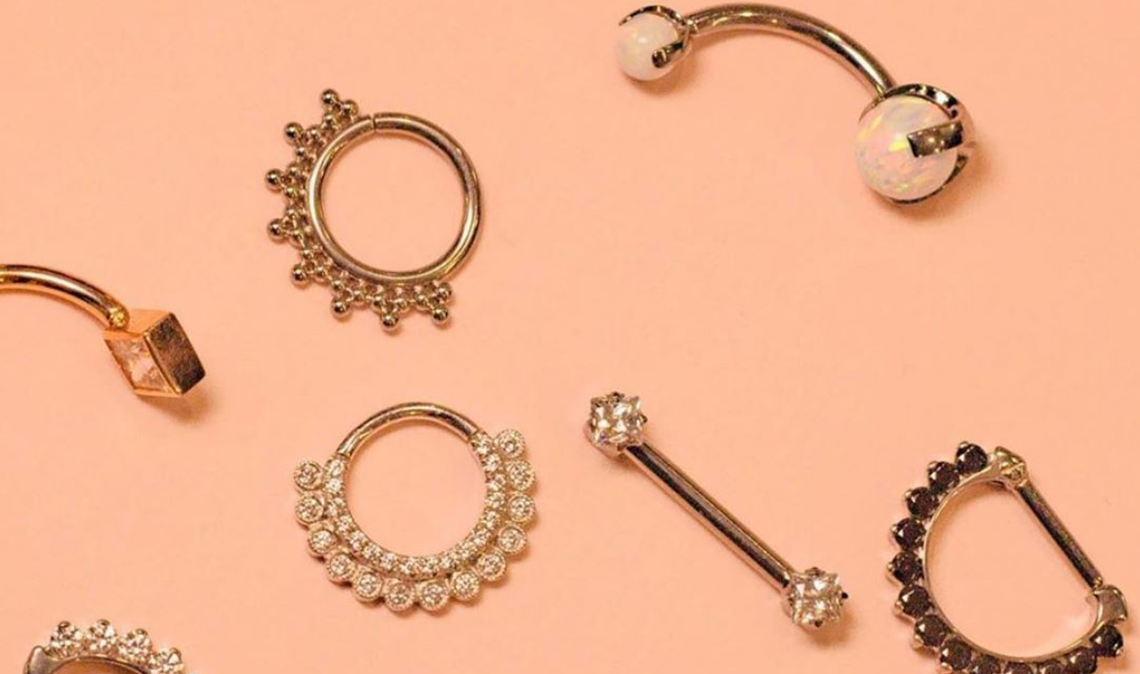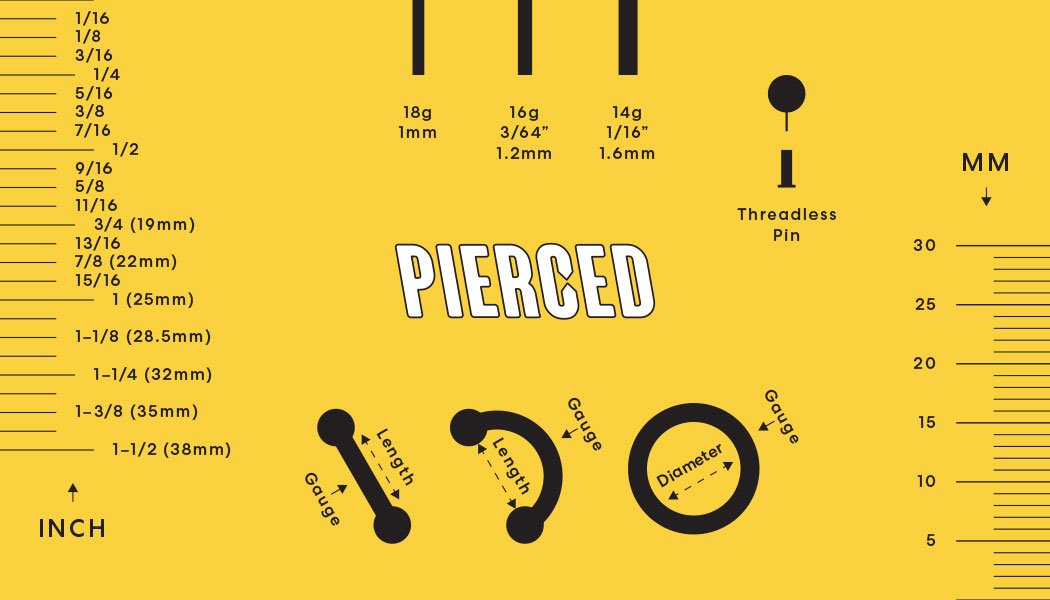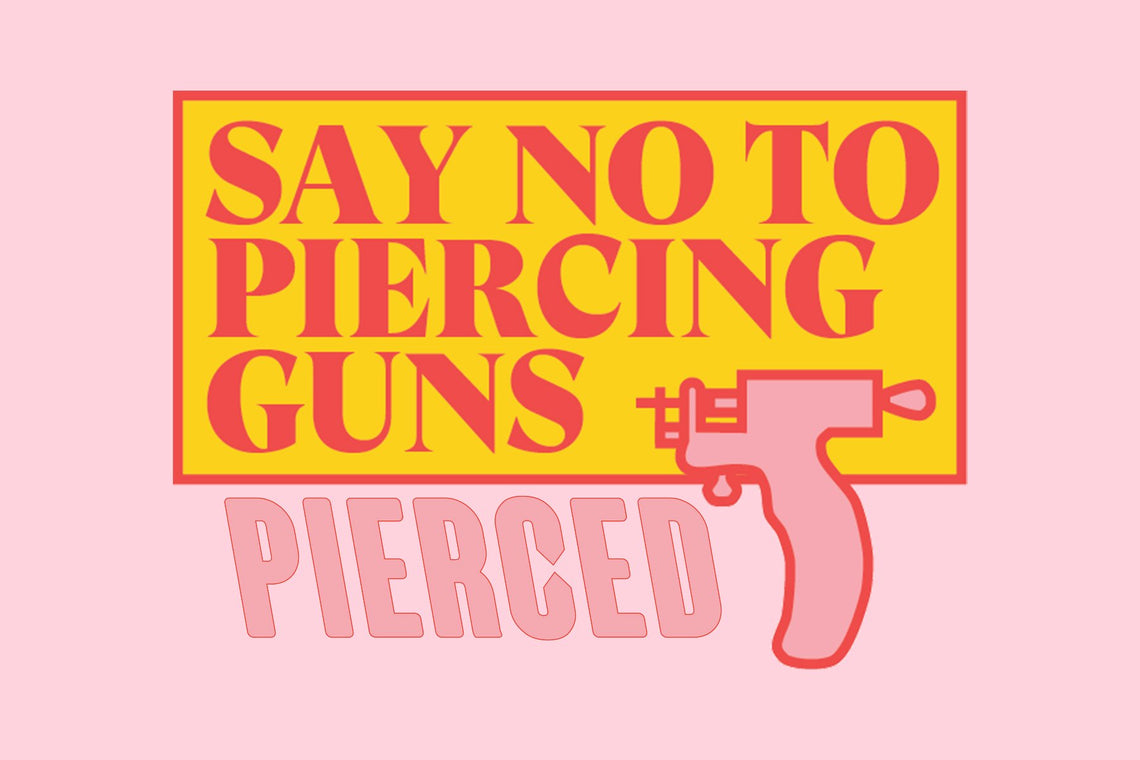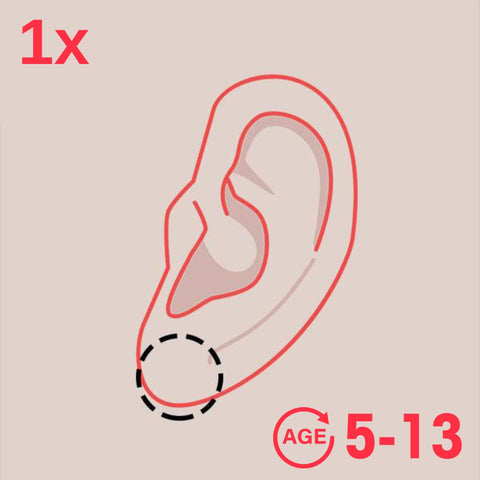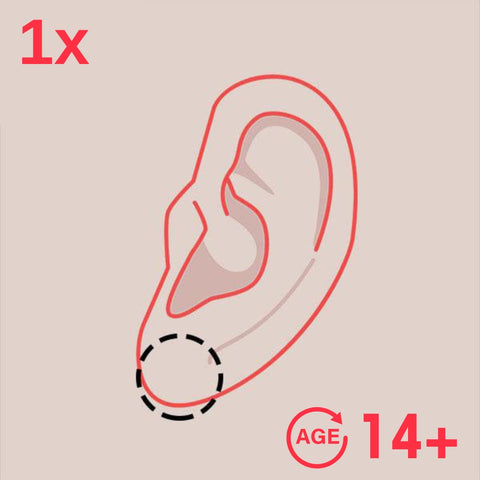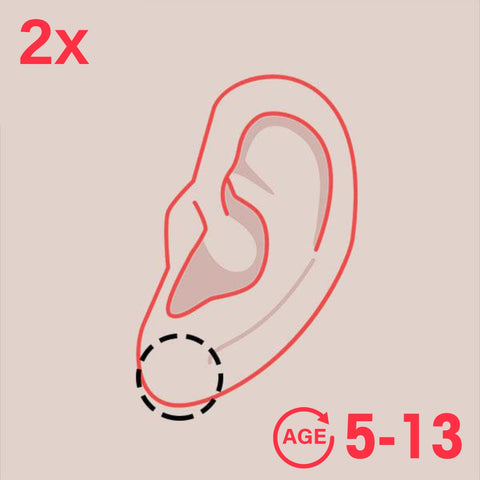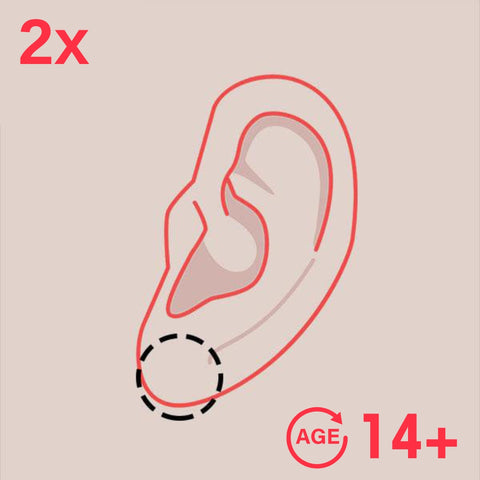When you get pierced your brain knows you want the piercing, but it takes your body a little longer to get on the same page.
Your body’s immediate reaction is to treat the piercing as an open wound - because technically, it is. Normally, with proper aftercare, your body heals and adapts to the piercing. But sometimes the body begins to push out the jewellery before the piercing heals. This is known as rejection.
Our team of piercing experts explain:
- Why piercings get rejected
- How to tell when it’s happening
- What to do about it
- How to prevent rejection
Why Do Some Bodies Reject Piercings?
Piercing rejection is not very common, but it does happen. Rejection most common in the first few weeks to months after getting a piercing. So it’s important to keep an eye on new piercings. As well, there are a number of factors that can increase the chances of rejection:
- Location: Some locations are more prone to rejection than others, especially flat surfaces. Areas with tight skin also elevate risk because they put pressure on the piercing.
- Type of Piercing: Some piercings, like surface piercings, have a higher risk of rejection because they do not penetrate as deeply.
- Genetics: Not all bodies heal the same way. If you or your close family have a history of piercings being rejected, you’ll want to take extra caution.
- Allergies: High-quality titanium and 14k gold are nickel-free, but low-quality jewellery materials can contain enough nickel to trigger a reaction. This can reaction can lead to rejection or even infection, so it’s important to choose high-quality jewellery for new piercings.
- Body Changes: Significant changes in body size can affect a new piercing. Rapid weight loss/gain or pregnancy can stretch the skin, affecting the piercing.
- Sickness or Infection: When you get sick or infected your immune system ramps up its efforts. This can cause an increased drive for your body to reject a piercing.
How to Recognize When a Piercing is Being Rejected
With a new piercing, some of the signs can be difficult to differentiate from natural healing. For example, redness and swelling aren’t outside the ordinary course of healing in the first few days. But if it keeps getting worse, or stays the same for an extended period of time that may be a sign of rejection.
Here are a few other signs to look out for:
Changes in skin
If the skin is looking thinner or tighter around the piercing, or above the jewellery, it’s a possible sign of rejection. As well, the colour of your skin changing around the hole is another potential sign. Transparent/near-transparent skin is a very likely sign of rejection.
Migration
It jewellery begins to migrate there is a high likelihood of rejection. Even if a migrated piercing doesn’t end up fully rejecting it usually won’t end up looking the way you hoped. It’s best to try and catch migration early.
Early signs of migrating piercing jewellery are widening holes and stretch marks around the piercing.
Prolonged Inflammation
Although some inflammation is ordinary when you have a new piercing, keep an eye on it. The inflammation should start to reduce after the first few days. if it stays the same or gets worse look for other signs of rejection. As well other signs of irritation such as callouses, flakiness, or peeling skin are potentially symptoms.
Can You Save A Piercing That’s Being Rejected?
If you fear your piercing is in the process of rejection it’s best to talk to your piercer. If your piercing is already migrating there’s a good chance they will recommend removing it. At this point, there is little risk from removing it, but leaving it in could result in damage to your skin and make it difficult to repierce the area after healing.
Not all piercings can be saved but, if caught early, there are things that may save it. For example, your piercer may recommend changing the piercing jewellery to a safer metal, different gauge, or larger piece of jewellery.
If the piece is removed, you have to wait until the area has completely healed to try piercing it again. So it’s best to take preventative measures to prevent rejection from occurring:
How to Prevent Piercing Rejection
While some piercings, such as surface piercings, have a higher likelihood of rejection it is still relatively uncommon. And, fortunately, there are steps you can take to reduce the risk further.
Use a Professional Piercing Artist
Professionals know what they’re doing. You don’t want to put your health in the hands of an inexperienced part-timer with a piercing gun. Their equipment and training are not designed to maximize the safety or quality of your piercing.
Instead, you want to go to a professional piercing studio, with expert artist who use needles and proper sanitation techniques. Not only do they off better looking piercings with safer techniques, but they provide the support you need. An expert piercer can answer all your questions and provides you with a piercing aftercare program that fits your needs.
If you're in the Greater Toronto Area, we encourage you to visit our Mississauga Pierced location! Click here to book your piercing appointment online.
Keep Your Piercing Clean
Following your aftercare plan is essential to ensure the proper healing of your piercing. As well, it helps to prevent rejection and infection. Follow the guide or ask your piercer how to clean your piercings. This also helps to shorten your healing time.
Our Favourite Piering Aftercare Products
Choose Jewellery From the Piercing Shop
For a new piercing, it’s usually best to buy jewellery form the piercing shop. The piercers there know the gauge sizes are accurate and will have a working knowledge of how those pieces work with healing piercings. They may even have recommendations of pieces for you to start with.
As well, it’s easier for the piercing artists to be sure that the jewellery you are using is free of allergens.
Our Favourite Body Jewelry
Consider a Larger Gauge Size
Let your piercer know if you or your family have a history with rejected piercings. They may recommend a larger gauge size to reduce the risk of rejection. As well, a larger piece of jewellery may be less likely to shift.
Be Healthy
Throughout the healing period, taking care of your health is important. That means eating right and taking care of your body. This helps your body recover. This is most important on the actual day of your piercing. If you’re feeling sick or have an infection, book for a different day.
A body already fighting off an illness is already primed for rejection. Waiting a few extra days could prevent you having to wait up to a year to repierce a rejected piercing.
Find Professional Piercing Artists in Mississauga
Pierced is Mississauga's new professional piercing shop. Are piercing artists are expertly trained and make your health and safety their top priority. Book online or visit us at Square One Shopping Centre in Mississauga, Ontario for your next piercing.
Piercing Studios Near You
Mississauga
Square One Shopping Centre
100 City Centre Drive, Mississauga,
ON L5B 2C9
Phone
+1 (905) 232 -7226
Need an Experienced Piercer in Mississauga?
Working with an experienced piercer can make all the difference when it comes to your piercing experience. If you’re in the Mississauga, Ontario area and have any questions about ear piercing, body piercing or jewelry, give us a call or stop by our piercings studio today. We’d love to help walk you through what to expect and help you choose the right option.




